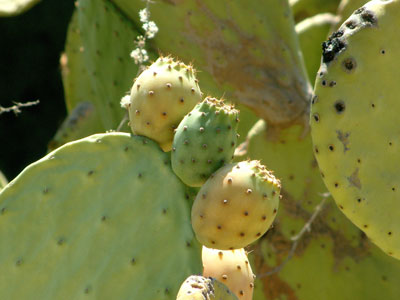
The grey-ish, blue/black colour of decapods is produced by a complex of the reddish carotinoid pigment astaxanthin (which colours carrots and other reddish foods) and the blue-green protein a(lpha)-crustacyanin. Astaxanthin is heat-stable while a(lpha)-crustacyanin is not. When the animal is cooked, the crustacyanin is denatured which releases the astaxanthin and results in the bright red colour we see. With many thanks to Lisa Fagg for this information.
Premiere is a variety of early potato which is good either boiled or steamed.

A large purple cooking plum which can be eaten fresh. It has yellow flesh and is moderately sweet when ripe.
This is the pea the seeds of which are reputed to have been found in the tomb of Tutankhamun. He gave these to the son of the then Lord Portman, whose gardener developed it in Dorset in the 1920's. This is unlikely.
Soursop. A type of custard apple, about 20 cm (8 inches) long, heart-shaped with a green spiny skin. Their flavour is sharper than many custard apples and the texture is not as good so it is used for drinks and desserts.

The prickly pear is the delicious but risky fruit of a cactus. The sweet, juicy flesh ripens from green to a deep apricot-pink colour. It is sensible to use leather gloves when dealing with these fruit as they are covered in fine, penetrating prickles. They are normally eaten raw but can be cooked, with the edible seeds becoming hard with cooking.